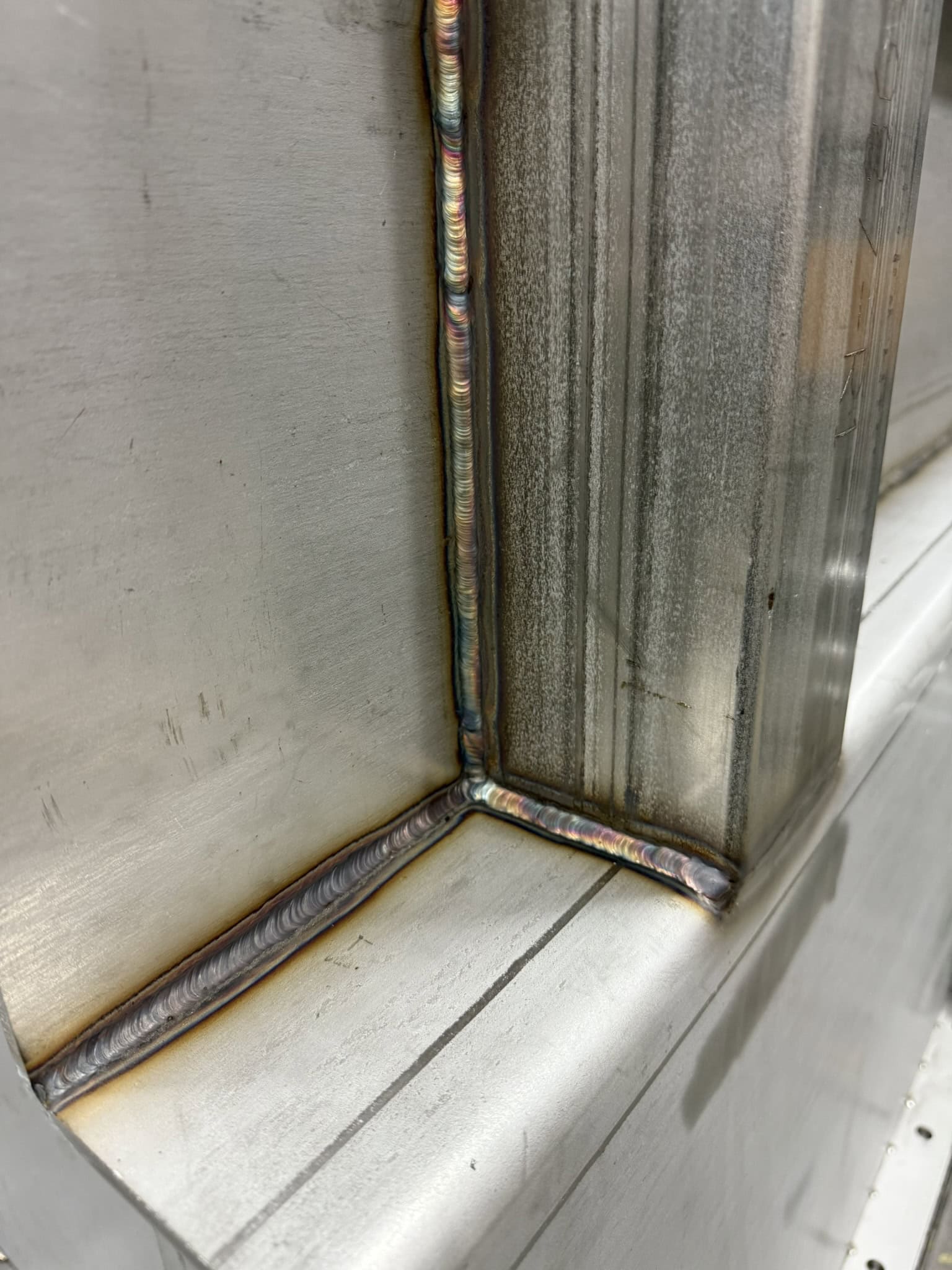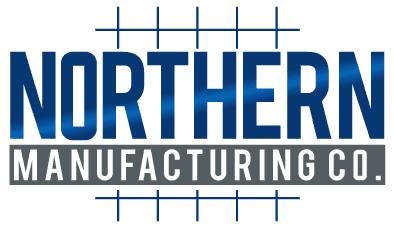The Anatomy of Failure: A Metallurgical Analysis of Corrosion in Welded Stainless Steel

This paper provides a metallurgical analysis of common corrosion failures in welded stainless steel components. It demonstrates that mechanisms such as Pitting, Crevice Corrosion, and Stress Corrosion Cracking (SCC) predictably initiate in the Heat-Affected Zone (HAZ) of welds where the protective passive layer has been compromised. We establish a direct correlation between comprehensive post-weld surface restoration, per standards like ASTM A380/A380M, and the long-term integrity and reliability of critical assets.
The Paradox of Premature Failure in Stainless Steel Assets
Stainless steel is specified for its anticipated longevity and resistance to corrosion. In critical industrial applications—from chemical processing and power generation to water treatment and food production—it is the material of choice for ensuring operational reliability and safety. Yet, a costly paradox frequently emerges: high-performance, expensive stainless steel assets that fail prematurely in service, leading to catastrophic leaks, unscheduled shutdowns, and significant safety risks.
Failure analysis consistently reveals a common culprit. These failures are rarely attributable to defective raw material. Instead, they are overwhelmingly initiated at the weldment—the very joints that give the component its final form. The act of fabrication, particularly welding, introduces a series of predictable metallurgical changes that, if left unaddressed, transform a corrosion-resistant alloy into a component with a built-in, latent defect. This paper will deconstruct the science behind these fabrication-induced vulnerabilities and demonstrate why a rigorous, verifiable post-weld treatment protocol is not an optional cleaning step, but an essential engineering requirement for guaranteeing asset integrity.
The Weldment as a Point of Inevitable Failure: Understanding Metallurgical Damage
Welding is an indispensable fabrication process, but the intense, localized heat it generates must be understood as a controlled act of metallurgical damage. This process creates a localized area of profound vulnerability by fundamentally altering the steel’s microstructure and surface chemistry, creating a perfect storm for corrosion initiation.
The Heat-Affected Zone (HAZ) and Sensitization
Adjacent to the molten weld pool is a region of the base metal known as the Heat-Affected Zone (HAZ). While this area does not melt, it is heated to temperatures high enough to trigger detrimental changes in its microstructure. For austenitic stainless steels, one of the most damaging phenomena is sensitization.
When these steels are held within a temperature range of approximately 500°C to 850°C, carbon in the alloy migrates to the grain boundaries and combines with chromium to form chromium carbide precipitates (Cr₂₃C₆). This process locks away chromium as carbides, creating a narrow zone directly adjacent to the grain boundaries that is severely depleted of the free chromium required to form the protective passive film. This chromium-depleted region becomes electrochemically active (anodic) compared to the surrounding unaffected metal, creating a microscopic corrosion battery within the material’s structure.
The Compromised Passive Layer and Oxide Scale
The high-temperature oxidation during welding creates a visible, rainbow-colored oxide layer known as “heat tint”. This is not a superficial stain but a thickened, non-protective oxide scale. The formation of this scale consumes chromium from the surface, creating an invisible but dangerous chromium-depleted layer directly beneath it. This compromised surface is incapable of forming a stable passive film and becomes a prime initiation site for localized corrosion. The color of the heat tint provides a direct, visible warning of the severity of the underlying metallurgical damage, with darker blues and purples indicating more significant chromium depletion than light yellows.
The Role of High Residual Tensile Stress
The rapid heating and cooling cycle of welding introduces significant residual stresses into the component. These stresses, which can approach the material’s yield strength, are locked into the fabrication near the weld and in the HAZ. While these stresses are inherent to welding, they become a critical threat when combined with a sensitized HAZ and a corrosive service environment. This combination of factors creates the ideal conditions for Stress Corrosion Cracking (SCC), a failure mechanism that can lead to sudden, catastrophic failure with little to no visible warning.
Common Failure Mechanisms Originating at Untreated Welds
The metallurgical vulnerabilities created during welding—a sensitized HAZ, a chromium-depleted surface, and high residual stress—become the predictable initiation points for several insidious forms of localized corrosion.
| Failure Mechanism | Description | Primary Cause at Weld |
| Pitting Corrosion | Highly localized attack forming small holes or pits that can rapidly penetrate the component wall. | Breakdown of the passive film in the chromium-depleted zone beneath heat tint. |
| Crevice Corrosion | Aggressive corrosion in narrow gaps where liquid is stagnant and oxygen is depleted. | Fabrication flaws such as incomplete weld penetration or intermittent stitch welds create geometric crevices. |
| Stress Corrosion Cracking (SCC) | Rapid propagation of brittle-like cracks under the combined influence of stress, a susceptible material, and a specific environment. | High residual tensile stress from welding combined with a sensitized HAZ exposed to chlorides. |
| Intergranular Corrosion (Weld Decay) | Preferential corrosive attack along the grain boundaries within the HAZ. | Sensitization, where chromium depletion along grain boundaries makes them anodic to the grain interiors. |
Pitting Corrosion
This is one of the most common failure modes originating at untreated welds. The chromium-depleted zone beneath the heat tint provides an ideal site for the passive layer to break down. Once a pit initiates, the chemical environment inside it becomes autocatalytic, growing more acidic and concentrated with aggressive ions like chlorides, which accelerates the attack and leads to rapid through-wall penetration.
Crevice Corrosion
Fabrication flaws like incomplete weld penetration create geometric crevices that are wide enough for liquid to enter but too narrow for it to circulate. Oxygen inside the crevice is quickly consumed and cannot be replenished, causing the area to become anodic relative to the oxygen-rich exterior. This establishes a powerful corrosion cell that drives rapid attack inside the flaw.
Stress Corrosion Cracking (SCC)
SCC is a particularly dangerous failure mechanism because it can cause a component to fail suddenly under normal service loads. The welding process creates all three necessary conditions: a susceptible, sensitized microstructure in the HAZ, high residual tensile stress, and a compromised surface ready to react with an environment containing chlorides.
Intergranular Corrosion (Weld Decay)
Historically known as “weld decay,” this mechanism directly attacks the sensitized grain boundaries within the HAZ. The chromium-depleted boundaries are electrochemically anodic to the chromium-rich grain interiors, causing the corrosion to propagate along these boundaries. The attack can be so severe that individual grains fall out, leading to a catastrophic loss of mechanical integrity with very little overall weight loss.
Case Studies in Asset Failure: Evidence from the Field
The connection between untreated welds and in-service failure is not theoretical; it is a recurring theme in documented failure analyses across multiple industries.
- Case Study: Petrochemical Pipeline
A 304 stainless steel pipeline failed after only a few months in service. The investigation found that failure initiated via pitting and SCC on the pipe’s outer surface, specifically within the weld HAZs. The combination of residual welding stresses and chlorides in the surrounding soil created the exact conditions for rapid, localized failure. - Case Study: Industrial Stack
A large industrial stack fabricated from 316L stainless steel exhibited massive leakages and through-wall cracks near its welded joints after just one year. Failure analysis determined that high residual tensile stresses from welding were the driving force for SCC, which initiated in the HAZ after initial corrosion from acidic flue gas condensation.
These cases highlight a critical truth for any reliability manager or design engineer: the single greatest point of vulnerability for a fabricated stainless steel asset is the untreated weld. These failures are the predictable outcome of leaving a metallurgically compromised and highly stressed region exposed to a service environment.
The Northern Manufacturing Protocol for Failure Prevention and Assured Integrity
At Northern Manufacturing, our quality philosophy is built on the principle that predictable failures demand preventative processes. We connect the science of corrosion directly to our in-house fabrication and finishing protocols. We recognize that the metallurgical damage described in this paper is an unavoidable consequence of welding; therefore, its complete removal and the restoration of the surface is a mandatory, non-negotiable manufacturing step.
Our mandatory post-weld treatment protocol is a critical restorative process, not an optional cleaning step. This protocol is executed in our dedicated 55′ L x 20′ W x 20′ H spray pickling booth. This significant in-house capability allows us to maintain complete process control over large-scale fabrications, ensuring uniform treatment and eliminating the risks and variability associated with subcontracting this critical step.
Our process, which adheres strictly to ASTM A380/A380M for pickling and ASTM A967/A967M for passivation, is engineered to mitigate the root causes of corrosion by:
- Completely removing the heat tint and the underlying sensitized, chromium-depleted layer through controlled chemical pickling.
- Restoring a fresh, metallurgically sound, and fully-alloyed surface that is capable of forming a robust passive film.
- Verifying the quality of the final passivated surface to ensure it is free of contaminants and optimized for maximum corrosion resistance.
Crucially, the quality and compliance of this entire process are overseen and verified by our on-staff Certified Welding Inspectors (CWI) and ASNT SNT-TC-1A Level III personnel. This level of certified, in-house expertise provides our clients with the ultimate assurance that every fabrication is not only built to print but is delivered in a metallurgically pristine condition, ready for a long and reliable service life.
Conclusion: Engineering Proactive Reliability into Fabrication Specifications
The evidence is unequivocal: a clear, metallurgical link exists between untreated welds and the most common and costly corrosion failures in stainless steel assets. These failures are preventable. The responsibility for prevention lies not in hoping for the best, but in engineering for reliability through proactive, unambiguous specification.
By understanding the anatomy of failure, engineers can effectively mitigate risk. The proactive specification of a comprehensive post-weld treatment protocol—one that includes pickling to restore the metallurgy of the HAZ and passivation to ensure a contaminant-free surface, all verified to industry standards like ASTM A380 and A967—is the most effective and highly-leveraged risk mitigation strategy available. It transforms the abstract requirement for “durability” into a concrete, auditable, and reliable outcome.
Note: Industry standards are subject to revision. Always consult the latest version of ASTM A380 and ASTM A967 for project-specific requirements.
Discuss Your Fabrication Challenge with Our Engineering Team
Partner with a fabricator that protects your investment. Submit your drawings to our team for a technical review and a comprehensive quote that reflects the true cost of quality.
